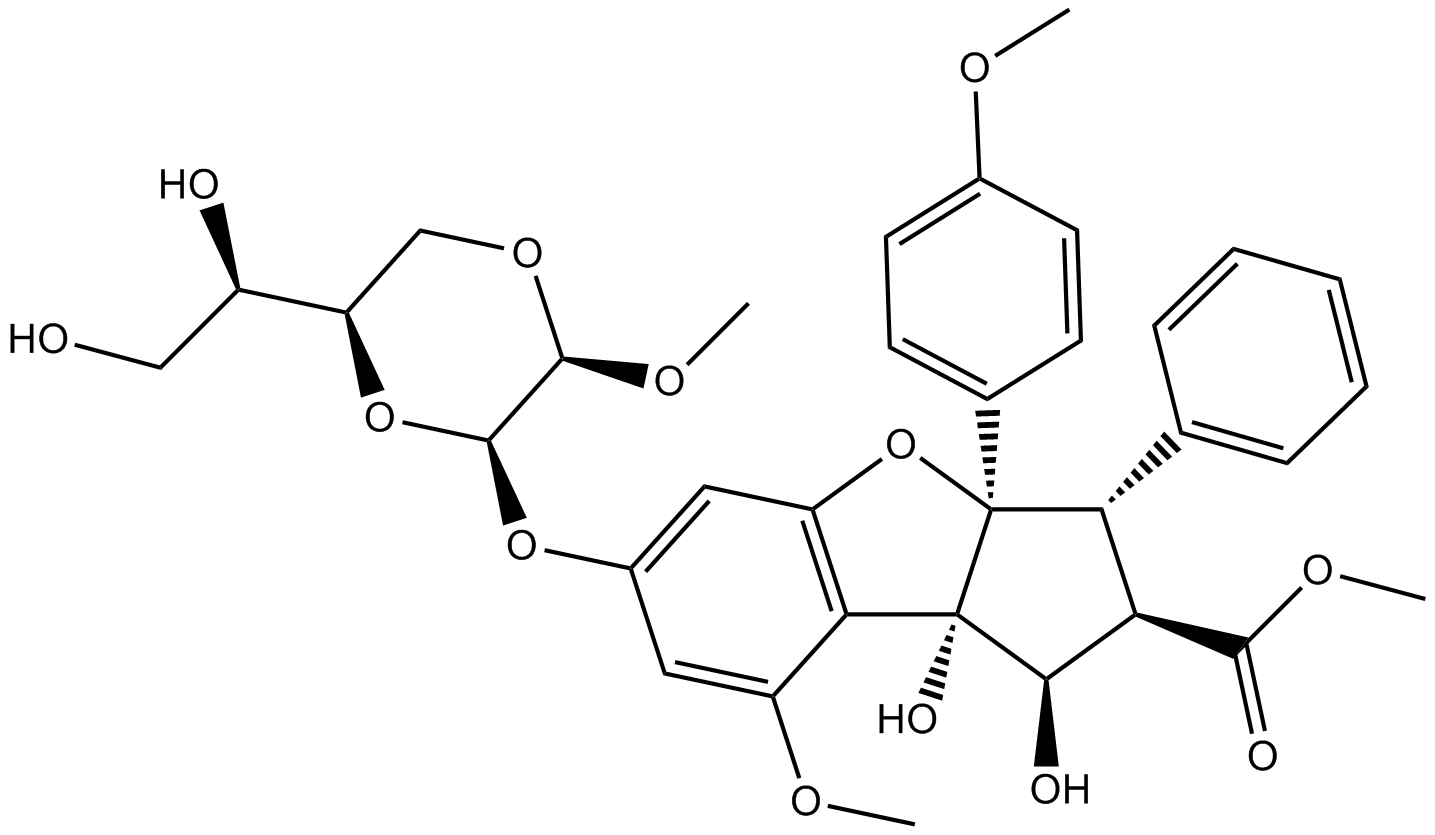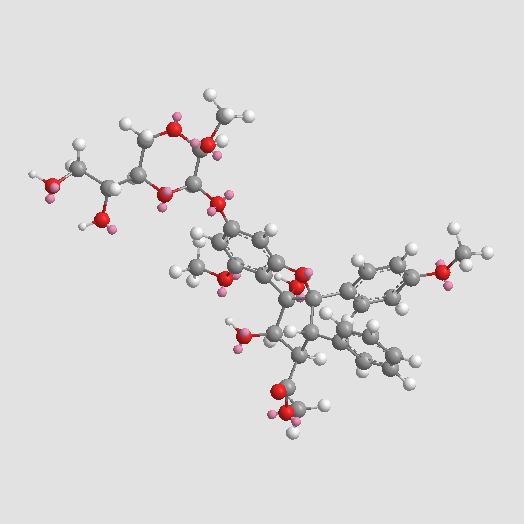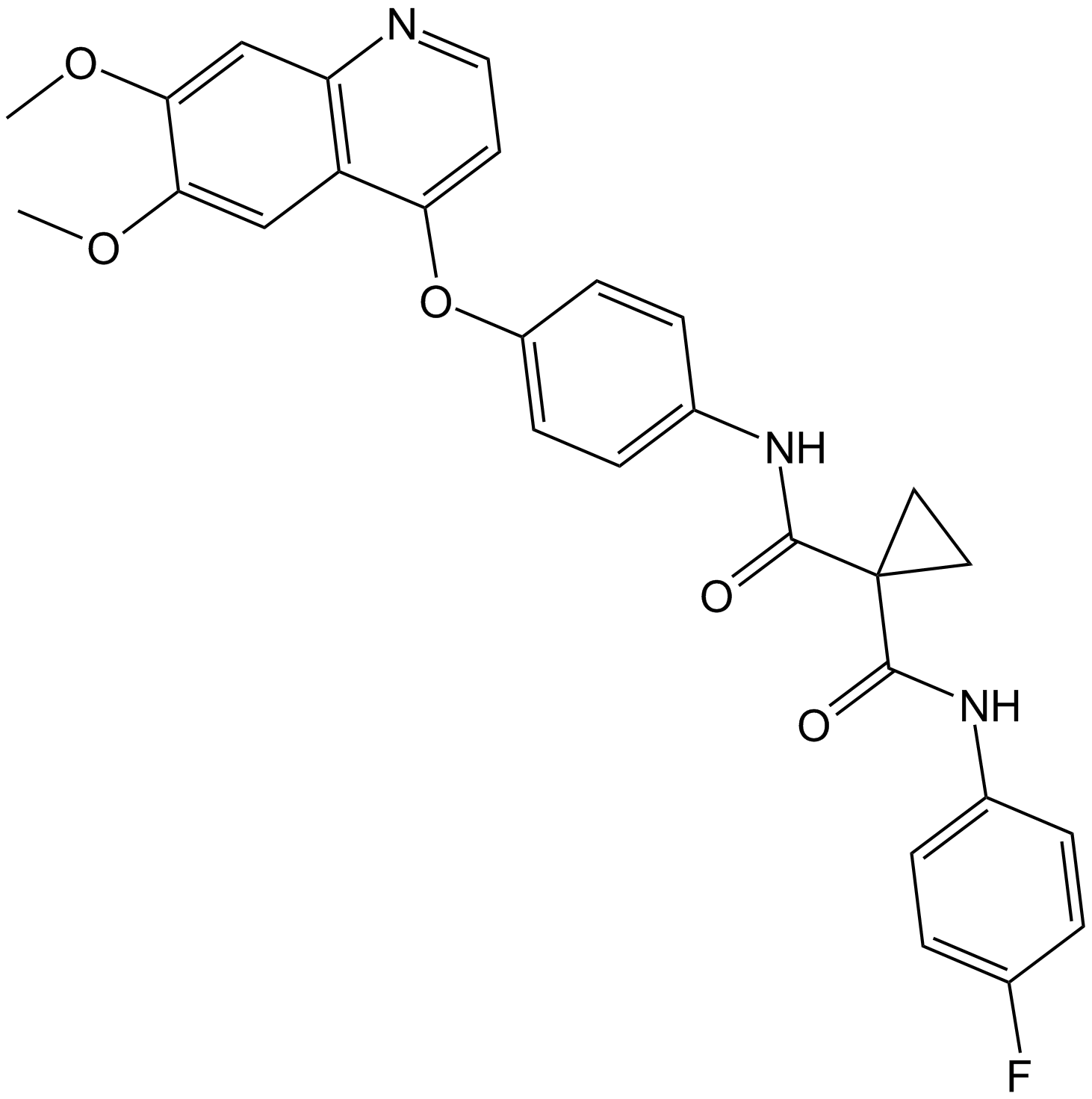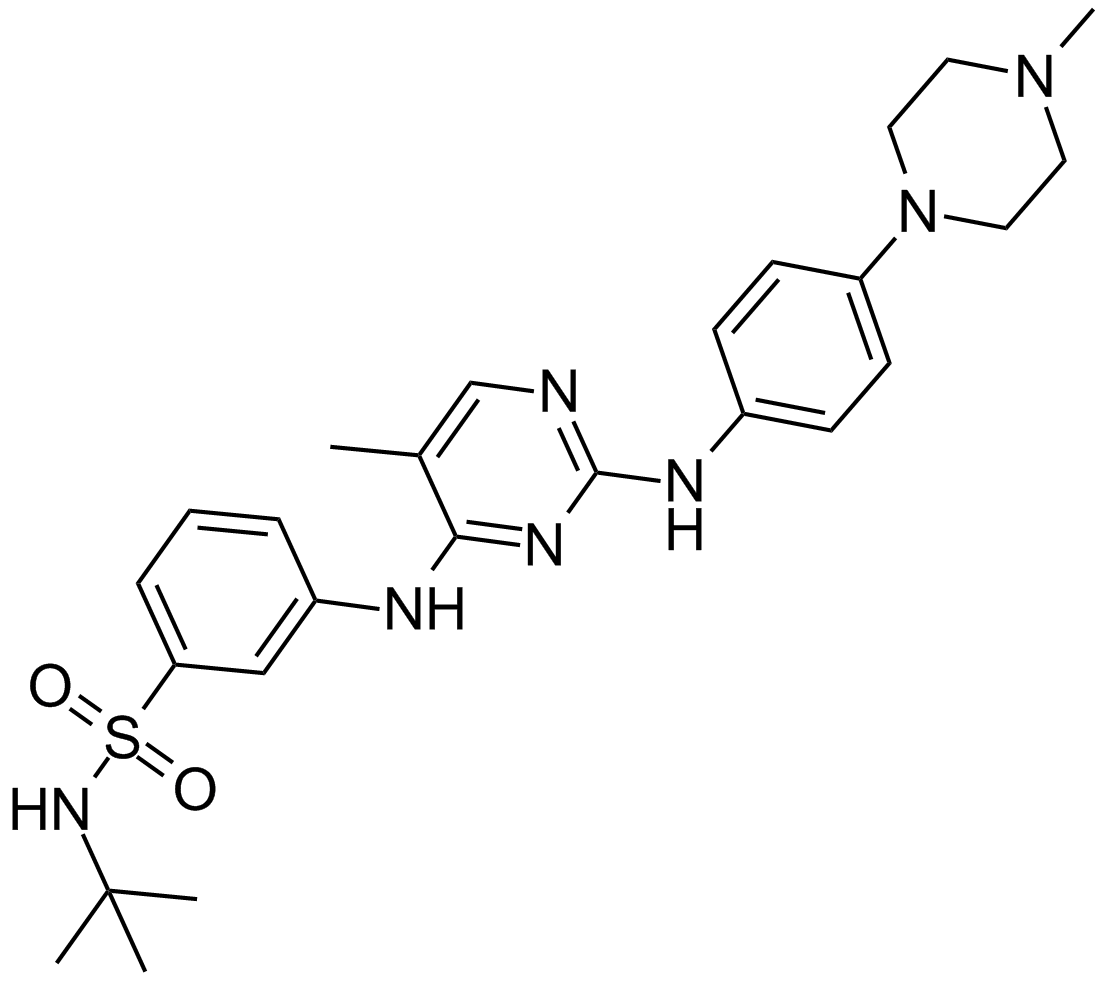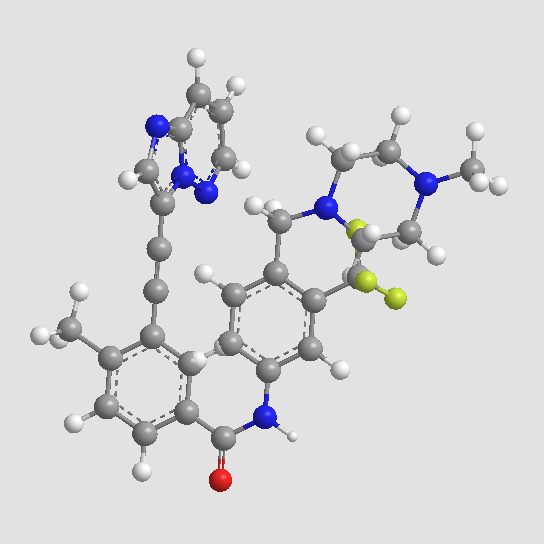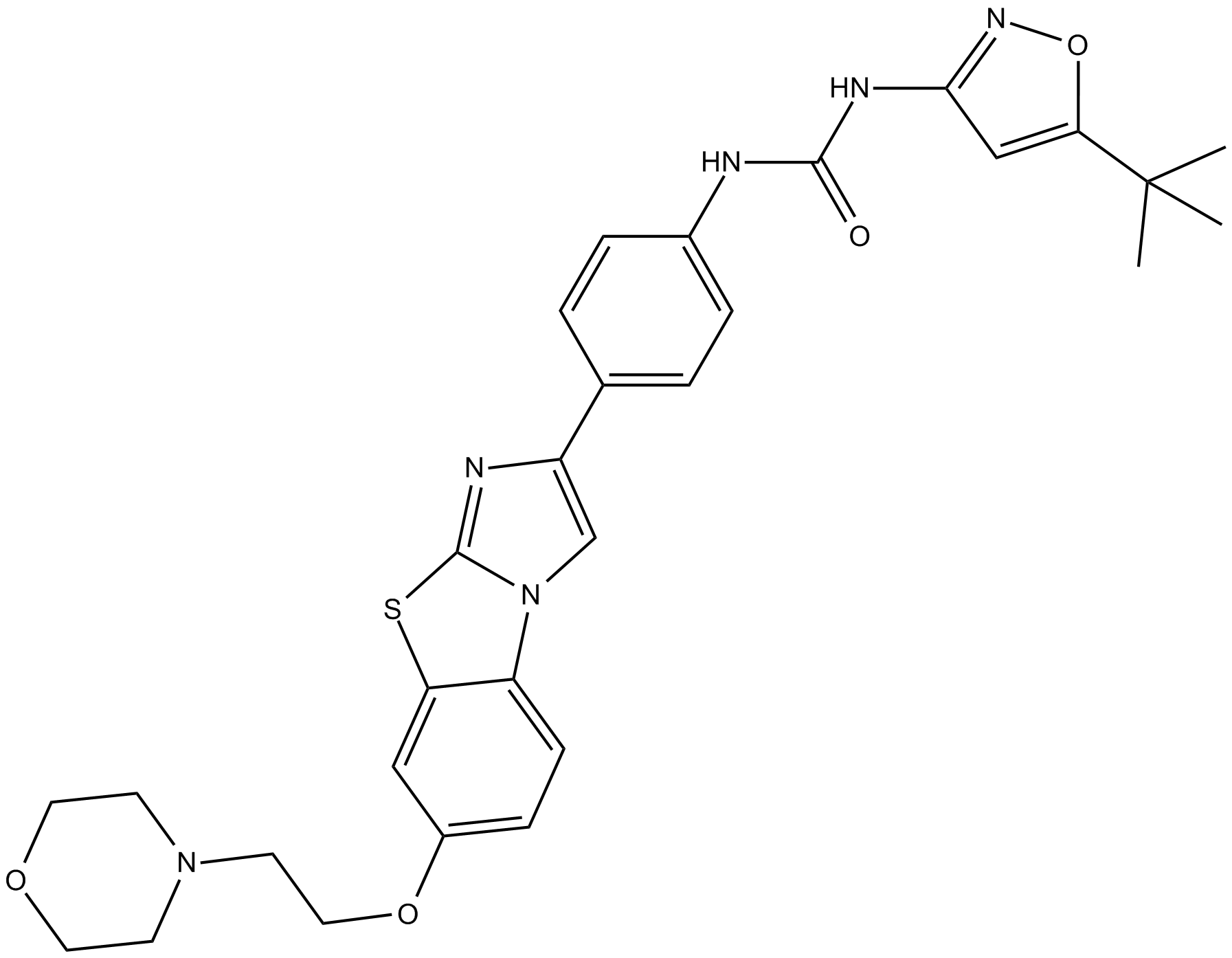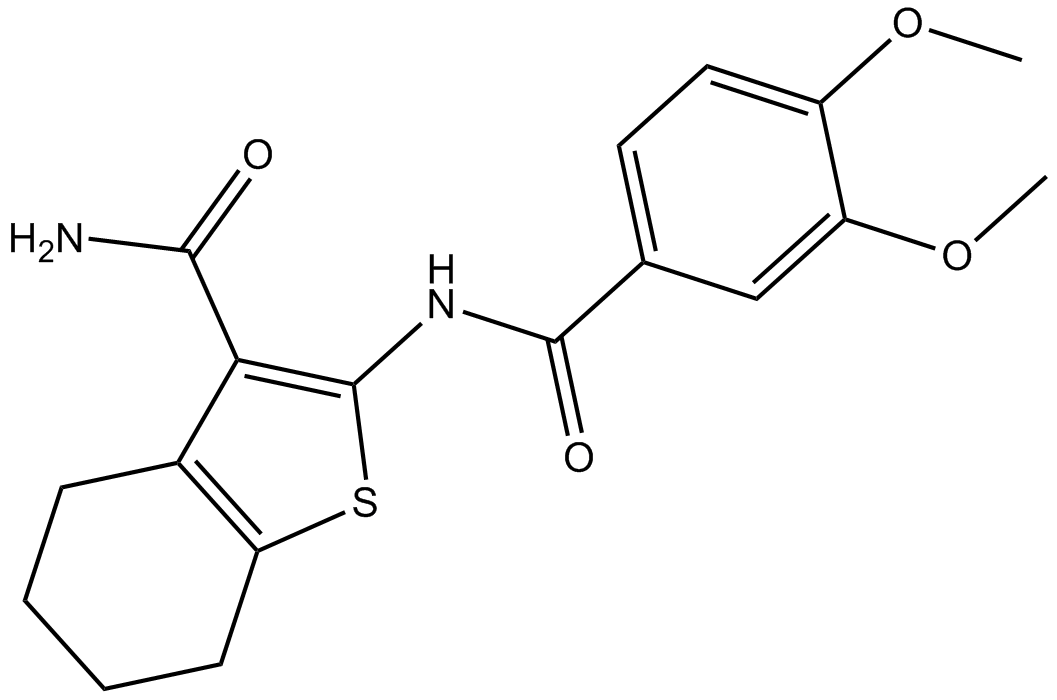Silvestrol
Silvestrol inhibited protein synthesis in MDA-MB-231 breast and PC-3 prostate cancer cell lines with IC50 ~60 nM following a 1 h exposure) [1]. Silvestrol inhibited cell growth with an IC50 of 12.5-86 nM in four different HCC cell lines [3].
Silvestrol, a member of flavagline family of natural products from the genus of Aglaia exhibiting anti-cancer activity in vitro and in vivo and inhibiting translation initiation, was shown to be capable of modulating chemosensitivity in a mechanism-based mouse model.
Preclinical study: A previous study demonstrated that silvestrol showed antileukemia activity at nanomolar concentrations in both FLT3-wt overexpressing (THP-1) and FLT3-ITD (MV4-11) expressing AML cell lines (IC50 = 3.8 and 2.7 nM, respectively) and patients’ primary blasts [IC50 = ~12 nM (FLT3-wt) and ~5 nM (FLT3-ITD)]. Moreover, silvestrol was observed to efficiently inhibite FLT3 translation resulting in a decrese of FLT3 protein expression by 80–90%. Animal study indicated that the median survival of silvestrol-treated mice significantly increased (silvestrol-treated vs vehicle-treated = 63 vs 29 days postengraftment) [2]. Another study showed that silvestrol could increase the activities of apoptosis and caspase 3/7. In vivo, the antitumor effect was found with 0.4 mg/kg silvestrol, and the survival of tumor-bearing mice was improved with a median survival time of 42 and 28 days in the silvestrol and control groups, respectively [3].
Clinical study: Currently, there is no clinical data about the anti-cancer efficacy of silvestrol. A grant application proposeed to pursue a Phase I clinical trial to assess the safety, maximum tolerated dose, pharmacokinetic and pharmacodynamic properties, and preliminary efficacy of silvestrol in patients with relapsed, refractory Chronic lymphocytic leukemia (Pre-Clinical and Clinical Development of Silvestrol in Chronic Lymphocytic).
References:
[1] Cencic R, Carrier M, Galicia-Vázquez G, Bordeleau ME, Sukarieh R, Bourdeau A, Brem B, Teodoro JG, Greger H, Tremblay ML, Porco JA Jr, Pelletier J Antitumor activity and mechanism of action of the cyclopenta[b]benzofuran, silvestrol. PLoS One. 2009;4(4):e5223. doi: 10.1371/journal.pone.0005223.
[2] Alachkar H, Santhanam R, Harb JG, Lucas DM, Oaks JJ, Hickey CJ, Pan L, Kinghorn AD, Caligiuri MA, Perrotti D, Byrd JC, Garzon R, Grever MR, Marcucci G. Silvestrol exhibits significant in vivo and in vitro antileukemic activities and inhibits FLT3 and miR-155 expressions in acute myeloid leukemia. J Hematol Oncol. 2013;6:21. doi: 10.1186/1756-8722-6-21.
[3] Kogure T, Kinghorn AD, Yan I, Bolon B, Lucas DM, Grever MR, Patel T. Therapeutic potential of the translation inhibitor silvestrol in hepatocellular cancer. PLoS One. 2013;8(9):e76136. doi: 10.1371/journal.pone.0076136.
| Storage | Store at -20°C |
| M.Wt | 654.66 |
| Cas No. | 697235-38-4 |
| Formula | C34H38O13 |
| Synonyms | (-)-Silvestrol |
| Solubility | Soluble in DMSO |
| Chemical Name | methyl (1R,2R,3S,3aR,8bS)-6-[[(3R,6R)-6-[(1R)-1,2-dihydroxyethyl]-3-methoxy-1,4-dioxan-2-yl]oxy]-1,8b-dihydroxy-8-methoxy-3a-(4-methoxyphenyl)-3-phenyl-2,3-dihydro-1H-cyclopenta[b][1]benzofuran-2-carboxylate |
| SDF | Download SDF |
| Canonical SMILES | COC1C(OC(CO1)C(CO)O)OC2=CC(=C3C(=C2)OC4(C3(C(C(C4C5=CC=CC=C5)C(=O)OC)O)O)C6=CC=C(C=C6)OC)OC |
| Shipping Condition | Small Molecules with Blue Ice, Modified Nucleotides with Dry Ice. |
| General tips | We do not recommend long-term storage for the solution, please use it up soon. |
| Cell experiment [1]: | |
|
Cell lines |
Human HCC cells |
|
Preparation method |
This compound is soluble in DMSO. General tips for obtaining a higher concentration: Please warm the tube at 37 °C for 10 minutes and/or shake it in the ultrasonic bath for a while. Stock solution can be stored below - 20 °C for several months. |
|
Reacting condition |
0 ~ 200 nM; 72 hrs |
|
Applications |
Silvestrol potently inhibited human HCC cell growth in a concentration-dependent manner, with an IC50 value of 23.9 nM in PLC/PRF-5 cells, 12.5 nM in Hep-3B cells, 14.6 nM in Huh-7 cells and 86 nM in HepG2 cells. |
| Animal experiment [1]: | |
|
Animal models |
Nude mice bearing human HCC xenografts |
|
Dosage form |
0.4 or 1 mg/kg; i.p.; 5 days/week, for 4 weeks |
|
Applications |
In nude mice bearing human HCC xenografts, a therapeutic response was observed in 36.4% of mice receiving 1 mg/kg Silvestrol and in 20% of mice receiving 0.4 mg/kg Silvestrol. At both doses, Silvestrol significantly increased the survival. |
|
Other notes |
Please test the solubility of all compounds indoor, and the actual solubility may slightly differ with the theoretical value. This is caused by an experimental system error and it is normal. |
|
References: [1]. Kogure T, Kinghorn AD, Yan I, Bolon B, Lucas DM, Grever MR, Patel T. Therapeutic potential of the translation inhibitor silvestrol in hepatocellular cancer. PLoS One. 2013;8(9):e76136. doi: 10.1371/journal.pone.0076136. | |
Quality Control & MSDS
- View current batch:
-
Purity = 98.00%
- COA (Certificate Of Analysis)
- MSDS (Material Safety Data Sheet)
- Datasheet
Chemical structure
